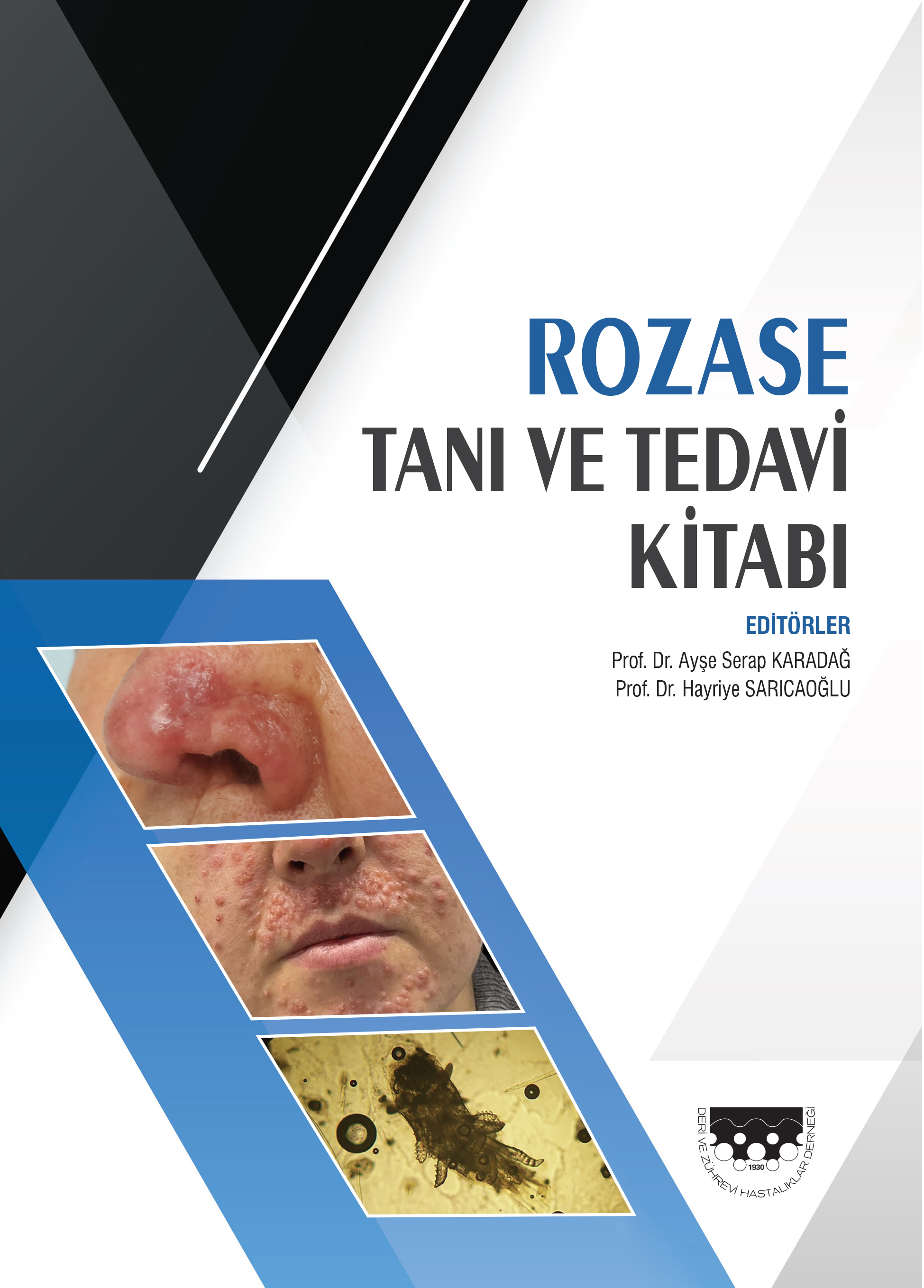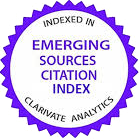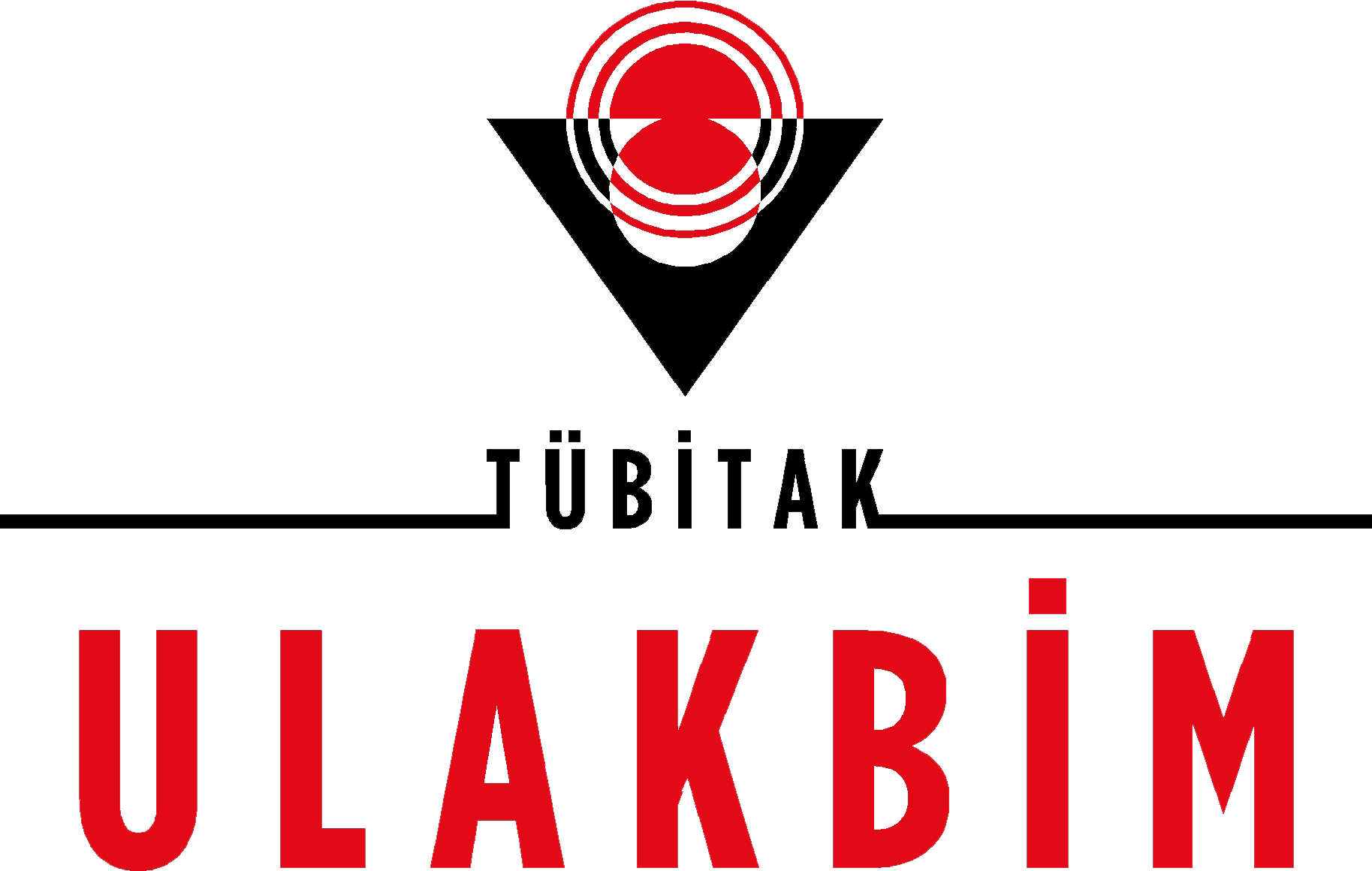Volume: 49 Issue: 3 - 2015
| EDITORIAL | |
| 1. | Editorial Emine Derviş Page 179 Abstract | |
| ORIGINAL INVESTIGATION | |
| 2. | Omalizumab and treatment-resistant chronic spontaneous urticaria Aynur Akyol, Ayşe Öktem, Bengü Nisa Akay, Nihal Kundakçı, Ayşe Boyvat doi: 10.4274/turkderm.22587 Pages 180 - 183 Background and Design: Humanized monoclonal antibody omalizumab was developed for the treatment of moderate-to-severe asthma. However, recently, reports on the successful use of omalizumab in the treatment of resistant chronic urticaria are increasing in the literature. Materials and Methods: We retrospectively evaluated treatment response, adverse effects and duration of remission in 13 chronic spontaneous urticaria patients treated with omalizumab between May 2010 and January 2014. Results: In ten of the thirteen patients treated with omalizumab, urticarial lesions were suppressed and no side effects were observed. Conclusion: Our observations support the findings in the literature indicating that omalizumab is an effective and safe option in the management of treatment-resistant chronic urticaria. |
| 3. | Positivity of autologous serum skin test in patients with alopecia areata and vitiligo and in healthy individuals Münevver Güven, Aysel Gürler, Fatma Gülru Erdoğan, Özge Gündüz doi: 10.4274/turkderm.79989 Pages 184 - 190 Background and Design: Autologous serum skin test (ASST), the best in-vivo test displaying in vitro basophil histamin releasing activity, is used in the diagnosis of chronic autoimmune urticaria. Besides, it is cheap and is easy to perform. It has been found that in ASST-positive chronic urticaria patients, autoimmune thyroid disease especially and other autoimmune diseases were more common and the level of autoimmune markers were higher compared to others. Autoimmunity is accused in the pathogenesis of alopecia areata and vitiligo. In this study, we assessed ASST results in healthy controls and those with autoimmune diseases, and aimed to explore the effects of thyroid autoantibodies and other factors in ASST positivity. Materials and Methods: ASST was administered to 51 patients with alopecia areata, 53 patients with vitiligo and 51 healthy controls, and thyroid function tests and thyroid autoantibodies (anti-Tg, anti-TPO) were assessed. Results: ASST was positive in 64.7% of patients with in alopecia areata, 64.2% of those with vitiligo and in 45.1% of controls. There was no statistically significant difference between the groups in terms of ASST positivity. We observed that ASST positivity had no relationship with age, anti-Tg, anti-TPO and the presence of one or both autoantibody positivity. It was seen that the frequency of ASST positivity was higher in females than in men in all groups, but it was statistically significant in alopecia areata group only. Among the all study groups, the frequency of ASST positivity was statistically significantly higher in females than in men. Conclusion: The high rates of ASST positivity in individuals with alopecia areata and vitiligo as well as in healthy control, indicate that ASST positivity does not solely exist in chronic urticaria patients. With logical regression analysis, it was shown that, having alopecia areata and being female significantly increase the risk of having ASST positivity. Therefore, we assume that ASST positivity might indicate the autoimmune etiology for alopecia areata and susceptibility to autoimmune diseases in female gender. |
| 4. | Serum visfatin levels in Behçet's disease Nazan Emiroğlu, Fatma Pelin Cengiz doi: 10.4274/turkderm.43650 Pages 191 - 195 Background and Design: The genetic predisposition, infectious agents, various antibodies and oxidative stress has been suggested to be among the possible causes of the etiopathogenesis of Behçets disease (BD). Recently, a new protein called visfatin, synthesized by adipose tissue has been identified. Visfatin has been found to be associated with many cases like insulin resistance, obesity, atherosclerosis, inflammation, immunity. In this study, we aimed to evaluate the relationship between serum visfatin levels and the activity of Behçet's disease, and determine the role of visfatin in the inflammatory process of BD. Materials and Methods: One hundred patients (43 M, 57 F) who were diagnosed as Behçets disease according to BD International Working Group criteria and 60 (31 M, 29 F) healthy individuals joined the study. Patient group was composed of 50 active and 50 inactive Behçet's patients. Statistical analyzes were performed with SPSS 15.0 program. Results: Visfatin levels were significantly higher in both group of patients compared to the control group (p<0.001) (p<0.001). Serum visfatin levels in patients with active disease were found statistically significantly higher than inactive patients (p<0.001). Conclusions: Serum visfatin levels in both active and inactive patient groups were higher than the control group. Visfatin is a proinflammatory cytokine and has a role in chronic inflammatory reaction by inducing cellular expression of inflammatory cytokines. Visfatin may play a role via this method in the pathogenesis of active and chronic phase of Behcet's disease. |
| 5. | Assessment of nasal carriage of staphylococcus aureus in patients with acne vulgaris Betül Demir, Affan Denk, İlker Erden, Demet Çiçek, Haydar Uçak doi: 10.4274/turkderm.47550 Pages 196 - 199 Background and Design: Systemic antibiotics, such as tetracycline and doxycycline are used in the treatment of inflammatory forms of moderate acne, or acne that is resistant to topical treatment. Oral isotretinoin treatment is the most effective treatment option in severe papulopustular and nodular forms of acne. Dose-related nasal carrier state of Staphylococcus aureus (S. aureus), has been reported in 90% of patients using isotretinoin. Long-term oral and/or topical antibiotic use in the treatment of acne causes changes in antibiotic susceptibility and emergence of methicillin-resistant S. aureus (MRSA) pathogens. The present retrospective study examined the colonization rates of S. aureus in patients who had an increase in acneiform lesions while taking medications for the treatment of acne and whose nasal swap samples were obtained and also investigated their relationship with treatment options. Materials and Methods: A total of 86 patients with moderate acne who attended our dermatology outpatient clinic with the complaints of acne and in whom nasal swap samples were obtained due to increased pustules during acne therapy. The patients were divided into three groups according to the treatment methods as patients receiving topical treatment, patients treated with oral doxycycline, and patients treated with oral isotretinoin. The results of the cultures were evaluated in three groups: no growth, methicillin-sensitive S. aureus (MSSA), and MRSAisolated. Results: 39.5% culture positivity (S. aureus) were determined in 34 patients. Thirty two (94.1%) culture positivity were MSSA, and 2 (5.9%) culture positivity were MRSA. Twenty nine (58%) culture positivity were found in the patients using the oral isotretinoin. There was statistically significant culture positivity in the patients using oral isotretinoin compared to patients receiving other treatments (p<0.001). Conclusion: We observed that S. aureus colonization increased in patients using systemic isotretinoin independent from the drug dose and duration of drug use. There was no significant change in patients using systemic doxycycline and the colonization decreased in patients using topical antibiotic treatment. |
| 6. | Investigation of the relationship between dermoscopic features and histopathological prognostic indicators in patients with cutaneous melanoma Özlem Özbağçıvan, Banu Lebe, Sevgi Akarsu, Emel Fetil doi: 10.4274/turkderm.93764 Pages 200 - 207 Background and Design: Dermoscopy has an important role in the diagnosis of melanoma nowadays. Dermoscopic findings of melanoma had been associated with Breslow thickness and invasion status in previous studies but the relationship between dermatoscopic findings and other histopathological prognostic indicators has not been investigated until today. In this study, our aim is to investigate the relationship between dermatoscopic findings and histopathologic prognostic indicators such as Breslow thickness, invasion status, mitotic rate, lymphovascular invasion (LVI), ulceration and regression in patients who had been diagnosed with melanoma due to their clinical, dermatoscopic and histopatological findings. Materials and Methods: Dermoscopic and histopathological findings of 47 cases of melanoma who applied to our clinic between the years 2000 and 2014 were evaluated. The relationship between the dermoscopic findings which had been reported to be observed in melanomas in previous research and the histopathologic prognostic indicators such as Breslow thickness, invasion status, mitotic rate, lymphovascular invasion, ulceration and regression were investigated. Results: Irregular dots/globules, atypical pigment network, multifocal hypopigmentation, radial streaks and moth-eaten borders have been associated with good prognostic indicators whereas comedo like openings, regular blotch, exophytic papillary structures, dotted, glomerular, lineer irregular vessels, pink/red and blue/gray colors were associated with poor prognostic indicators. Additionally some dermatoscopic findings which are more observed in benign lesions such as multiple milia-like cysts, comedo like openings, moth-eaten borders, regular blotch, exophytic papillary structures and finger print areas have been observed in melanomas in our study. Conclusion: Many dermoscopic findings have demonstrated statistically significant association with the histopathological prognostic indicators. Although the limited number of patients in this study with retrospective feature of our data, we think that our study may be the basis for future research due to the lack of similar studies in the literature. |
| 7. | Evaluation of sleep quality in patients with psoriasis Fatma Biçici, Sibel Berksoy Hayta, Melih Akyol, Sedat Özçelik, Ziynet Çınar doi: 10.4274/turkderm.70707 Pages 208 - 212 Background and Design: Psoriasis causes impairments in many daily activities, such as sleeping and occupational performance. One of the most important factors determining the quality of life of a person is sleeping. Studies about sleep quality in psoriasis are quite limited. In this study, we aimed to assess the quality of sleep and to examine the factors affecting the quality of sleep in patients with psoriasis. Materials and Methods: Seventy-three patients with psoriasis and 73 healthy subjects were included in the study. A sociodemographic data form was completed by all the participants and the Pittsburgh Sleep Quality Index (PSQI), 36-item Short-form Health Survey (SF-36), Hamilton Depression Rating Scale (HAM-D) and the Hamilton Anxiety Rating Scale (HAM-A) were administered to the patients and controls. Body Mass Index (BMI) was calculated in patient and control groups. The Psoriasis Area Severity Index (PASI) and Dermatology Life Quality Index (DLQI) were administered and pruritus was assessed in patient group. Results: PSQI global scores in patient group were found to be higher than in control group. Quality of sleep was worse in patient group. Severity of disease and sociodemographic features were found to be factors not affecting the quality of sleep. In patient group, the patients with higher sleep disturbances had higher rates of depression and anxiety scores. In patient group, the patients with severe pruritus had worse sleep quality. Conclusion: Psoriasis and psoriatic symptoms including pruritus impair sleep quality. Assessment of sleep quality and new strategies to improve sleep quality in patients with psoriasis may help improve quality of life. |
| 8. | Risk factors for scar formation after surgical incision Kıymet Handan Kelekçi, Şemsettin Karaca, Emine Demirel, Raziye Desticioğlu, Ayşe Merve Biçer, Onur Er, Serpil Aydoğmuş doi: 10.4274/turkderm.39225 Pages 213 - 217 Background and Design: The risk factors for scar development are still being discussed by dermatologists and surgeons. The aim of this study was to analyze the independent risk factors for the development of incisional scar type which develop after an abdominal delivery. Materials and Methods: Four hundred-ninety-two women who underwent caesarean operation one year ago or earlier were included in this study. After a detailed anamnesis and physical examination, data including demographic features, type of suture materials, time of suture removal, presence of striae, family history of hypertrophic scar, history of infection and/or hematoma, and total weight gain during pregnancy were recorded from the medical reports of patients. The scars were separated into two groups as atrophic and hypertrophic. The obtained data were compared according to the type of scars. A p value of less than 0.05 was considered statistically significant. Results: Both groups were similar in terms of demographic data. Atrophic scars were found in 408 of 492 patients and hypertrophic scars in 84 patients. Presence of wound site infection or hematoma (odds ratio OR: 5.64, 95%, confidence interval CI: 3.12-10.22), presence of striae (OR: 1.80, 95% CI: 1.12-2.91) and positive family history of hypertrophic scar (OR: 4.25 95% CI: 2.60-6.94) were associated with hypertrophic scar formation, while removal of nonabsorbable suture in less than 8 days (OR: 5.04 95% CI: 2.31-10.99) and wound closing time up to 11 days (OR: 2.80 95% CI: 1.64-4.78) were correlated with atrophic scar formation. Conclusion: Family history of hypertrophic scar, suture removal time after 7 days and complicated wound healing process seem to be risk factors for hypertrophic scar formation after surgical incision. Knowing these risk factors may contribute to the development of strategies to prevent scar formation. |
| 9. | The effects of Ankaferd, a hemostatic agent, on wound healing Sevgi Özbaysar Sezgin, Gülbahar Ceylan Saraç, Emine Şamdancı, Mustafa Şenol doi: 10.4274/turkderm.94758 Pages 218 - 221 Background and Design: There have been a lot of topical and systemic agents to provide an ideal scar formation and to decrease the periods of wound healing process by affecting the factors of healing (inflammatory cells, thrombocytes, extracellular matrix etc.). In this study, we investigated the effects of Ankaferd on wound healing. Materials and Methods: Wounds were created with 8 mm punch biopsy knots on the back of 32 rats which were separated into 4 groups of 9 rats. No treatment was done in group D which was the control group while group A received topical Ankaferd treatment twice a day; group B treated with silver sulfadiazine twice a day, and group C put on base cream, which did not include any active agent, twice a day. The rats were followed for 15 days macroscopically and examined histopathologically on days 0., 3., 7., and 15. by taking biopsy specimens. Result: At the end of our study, it was detected that Ankaferd accelerated the healing process in comparison to control and base cream groups according to the macroscopic and histopathologic results. Additionally, similar to this situation, it was observed that the healing process in silver sulfadiazine group was faster than in control and base cream groups. Conclusion: More experimental and clinical studies in larger populations are needed to prove and confirm its efficacy. |
| CASE REPORT | |
| 10. | Tinea incognito: Case series Mikail Yılmaz, Yelda Kapıcıoğlu, Serpil Şener, Hülya Cenk, Ayşegül Polat, Derya Yaşar doi: 10.4274/turkderm.05706 Pages 222 - 225 Tinea incognito is a dermatophytic infection which has lost its typical clinical appearance because of inappropriate use of topical or systemic corticosteroids. The clinical manifestations of tinea incognito can mimic many dermatoses such as eczema, psoriasis, allergic contact dermatitis, rosacea, seborrheic dermatitis and atopic dermatitis. The diagnosis of tinea incognito is confirmed by direct KOH (potassium hydroxide) examination ( native preparation), making the fungal cultures from the lesion and histopathological examination in some cases. Systemic antifungal therapy is recommended in the treatment of tinea incognito. Herein, 10 cases of tinea incognito which mimicking various dermatoses were diagnosed and treated in our clinic in 2014 is presented. |
| 11. | A rare case of giant cutaneous leiomyosarcoma: A case report Mehdi Iskandarli, Bengü Gerçeker Türk, Banu Yaman, Can Ceylan doi: 10.4274/turkderm.58235 Pages 226 - 228 Leiomyosarcoma (LMS) commonly evolving from smooth muscles of visceral organs like uterus, gastrointestinal system and has a worse prognosis due to its metastatic potential. LMS derived from smooth muscles of the skin, named superficial LMS, usually indolent and has a better prognosis. Especially LMS derived from pilar muscles usually restricted to the dermis and rarely metastasise. However, LMS developed from smooth muscles of subcutis, behaves more agressively and metastasing more oftenly. Here we report a case, in which patient consequently amputated and received chemotherapy due to giant superficial LMS on lower extremity which invaded underlying tissues like bone, tendons and joint and metastasized to the lung. |
| 12. | A rare cutaneous malignancy with poorly described clinical features: Lymphoepithelioma-like carcinoma of the skin Lale Mehdi, Nesimi Büyükbabani, Algün Polat Ekinci, Can Baykal doi: 10.4274/turkderm.66809 Pages 229 - 231 Lymphoepithelioma-like carcinoma can be originated from different organs, including nasopharynx, larynx, stomach, salivary glands, lung, thymus, cervix and bladder. Lymphoepithelioma-like carcinoma of the skin is a rare malignancy with low metastatic potential and is defined by a histologic picture simulating indifferentiated nasopharynx carcinoma. There are only a few case reports in the literature and the clinical features of the tumor are not well described. It presents usually with flesh-colored or reddish firm nodules and plaques which are nonspecific. The head and neck region is the predilection site of the tumor, but it can be seen in many other areas. We present here an 84-year-old male admitted to the dermatovenereology department with a slowly growing purplish-red asymptomatic plaque, 2x2 cm in diameter which was diagnosed as lymphoepithelioma-like carcinoma of the skin upon histopathologic examination. The tumor was excised and metastasis was not detected. Local recurrence was not observed in a one-year follow-up period. Lymphoepithelioma-like carcinoma of the skin should also be considered in the clinical differential diagnosis of slowly growing solitary nodules and infiltrated plaques. An other important feature of our case was the arm localization of the tumor which has been very rarely reported. |
| WHAT IS YOUR DIAGNOSIS? | |
| 13. | What is your diagnosis 1? Hakan Turan, Esma Uslu, Havva Erdem, Feyza Başar Pages 232 - 233 Tanınız nedir? formatli makaleler abstrakt gerektirmemektedir. |
| 14. | What is your diagnosis 2? Müzeyyen Gönül, Seray Külcü Çakmak, Esra Özhamam Pages 234 - 235 gerek yok |























